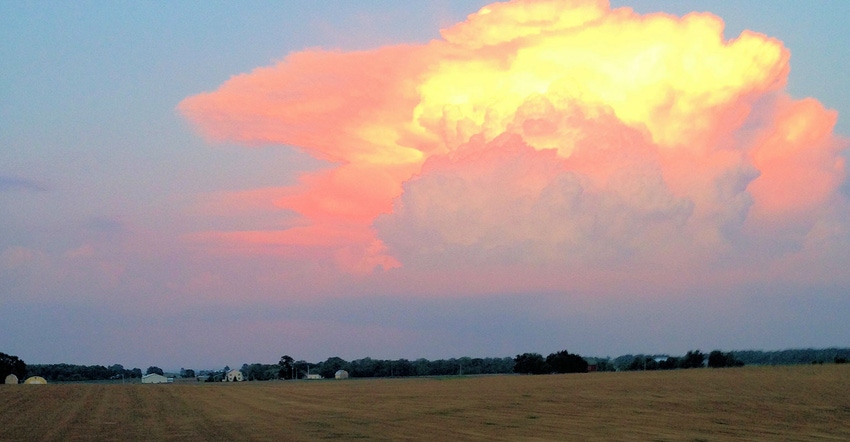
So, what will the weather be like this growing season? Depends on who you ask or what you read.
Weather forecasting is a tough job. Most people know it’s an inexact science, but that doesn’t stop the wrath of anger frim being directed at forecasters when they get it wrong.
Many things affect the weather, most of which people don’t even think about.
American Agriculturist asked Kyle Imhoff, Pennsylvania state climatologist, to take his best shot at predicting this summer’s weather and the things that will affect it.
What is the short-term forecast for the start of the planting season here in May?
It will be generally milder than normal through the first 10 or so days of the month followed by more seasonal temperatures toward the middle of the month.
It will be rather unsettled through the first week or two of the month, with some models hinting at a drying out toward the middle to latter half of the month.
What factors will affect the weather this month?
Given that we are in the midst of the spring season, as we sometimes call a “transition” season in meteorology, the major factors that dictate the sensible weather in the state is the jet stream location, which dictates storm tracks as well as placements of troughs and ridges.
Current model guidance is hinting at a fairly persistent ridge setting up over the southeastern U.S. This ridge will act to steer storms through the central U.S. northeast into the Mid-Atlantic and Northeast. As a result, the agricultural community should prepare for relatively frequent bouts of rain with winds from the south/southwest much of the time the next couple of weeks.
It is not out of the realm of possibility to even receive some localized flooding with some of these disturbances that move through.
What is your long-term outlook for the growing season and what factors will affect this forecast?
When we look at long-range outlooks (beyond a few weeks), one of the factors we look at is the El Niño-Southern Oscillation.
ENSO measures the relative temperature in the equatorial Pacific Ocean. Studies have shown that ENSO has a direct effect on persistent weather patterns in the U.S. and much of the globe.
Right now, ENSO is in "neutral" territory, meaning that the lack of presence of an El Niño — warmer-than-normal sea surface temperatures — or La Niña — cooler-than-normal sea surface temperatures. This lack of ENSO pattern leads to a decreased confidence in long-range forecasts.
Of the climate model guidance that we have, the remainder of the growing season is favored to be milder than normal with precipitation near normal early on. It may trend drier toward the latter half of the summer and early fall.
What do the almanacs say?
If you’re a fan of the Farmers’ Almanac — which makes its forecasts based on sunspot activity, tidal action of the moon, the position of the planets and other factors — expect it to be muggy and wet.
“Much of our summer forecast predicts lots of rain, thunderstorms and wetness during July and August in the Northeast and New England areas,” according to the almanac’s long-term forecast. “The increased clouds and showers will likely keep temperatures below the dozen or 90-degree days that might otherwise occur.”
The Old Farmer’s Almanac — which bases its weather predictions on magnetic storms on the Sun and claims an 80% accuracy rate — is calling for cooler temperatures and either wet or dry, depending on where you live.
If you’re in New England or eastern New York, temperatures and rainfall will be around normal most of the summer with the hottest period from late July to mid-August.
Live in Pennsylvania or Maryland? Expect a cooler-than-normal summer with the hottest periods in early and late June, early July and early August. There will be less rain to the north and more to the south.
If you live closer to the coast, the growing season will be cool and wet with the hottest periods in late June, early July and early August.
That’s your forecast. As you can see, it’s not an exact science.
About the Author(s)
You May Also Like






